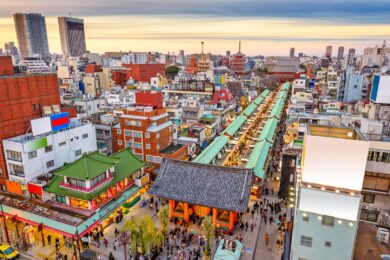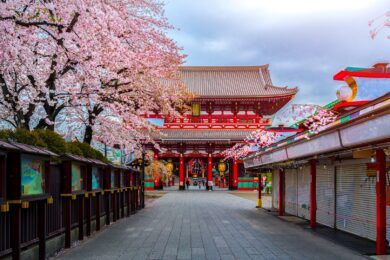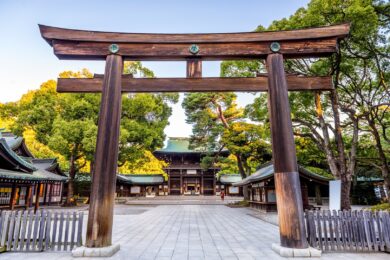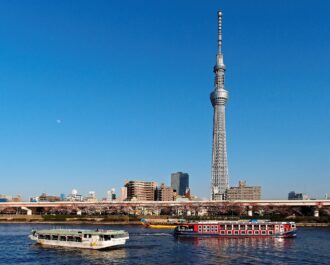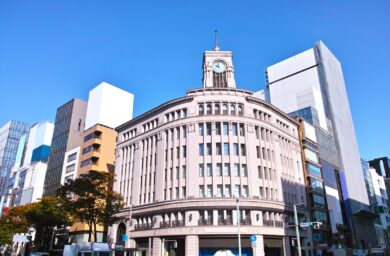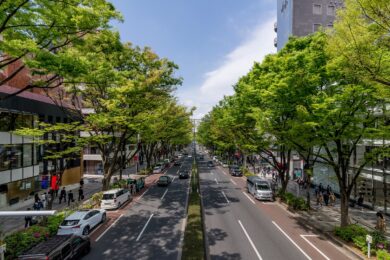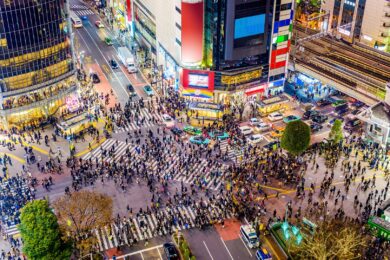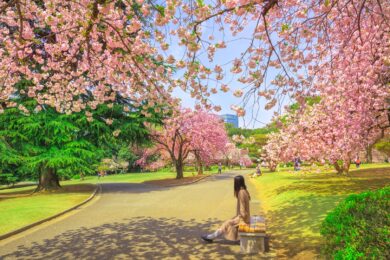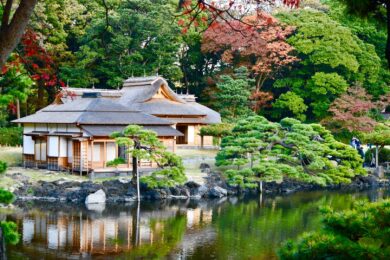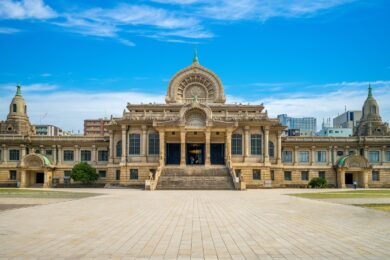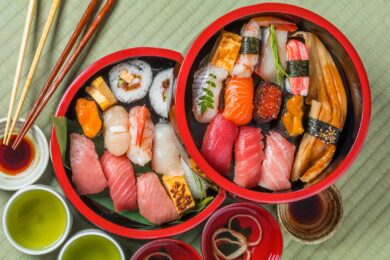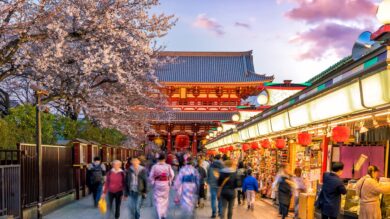Asakusa is a historic and culturally rich district in Tokyo, Japan, with several attractions including the famous Senso-ji Temple, The Tokyo Skytree, which offers panoramic views of Tokyo from its observation decks, the Sumida Aquarium, the Engei Hall (Rakugo Theater), where visitors can experience traditional Japanese entertainment, Sumida Park, where visitors can stroll along the river and view the Cherry Blossoms, and Asakus Rox, a shopping complex with various retail shops, restaurants, and a movie theater.
Dedicated to Kannon Bosatsu, the Bodhisattva of compassion, Senso-ji is one of Tokyo's most famous and oldest Buddhist temples. According to legend, Senso-ji was founded in the 7th century, when two fishermen found a statue of Kannon, the goddess of mercy, in the nearby Sumida River. The key sights in the temple are the Kaminarimon Gate (Thunder Gate), the Nakamise-dori, the Hozomon Gate, the Main Hall called the Hondo, which houses a statue of Kannon, and the five-story pagoda adjacent to the Main Hall.
Established in 1920 to honor Emperor Meiji, who played a crucial role in modernizing Japan in the late 19th century, the Meiji Shrine is one of Tokyo's most iconic landmarks. Visitors can explore the massive wooden torii gate at the entrance, the main hall, and the Meiji Memorial Hall, which houses various exhibitions related to Emperor Meiji and Empress Shoken. They can also purchase ema, wooden plaques on which they can write their wishes, or enjoy peaceful walks through the forested grounds around the Shrine.
At a height of 634 meters (2,080 feet), the Tokyo Skytree is one of the tallest free-standing broadcast towers and observation towers in the world. The tower has two main observation decks that are open to the public: the Tembo Deck and the Tembo Galleria. The Tembo Deck is located at a height of 350 meters and offers breathtaking panoramic views of Tokyo and its surroundings. The Tembo Galleria, at 450 meters, provides even higher and more spectacular views, as well as a unique "skywalk" section with a glass floor.
Ginza is one of Tokyo's most famous and upscale districts, renowned for its luxury shopping, high-end dining, and vibrant nightlife. It's often considered one of the most luxurious shopping areas in the world. The Ginza Crossing, situated at the intersection of two of Ginza's main streets, Chuo-dori and Harumi-dori, is an iconic sight in Tokyo. The crossing is surrounded by several historic department stores, like Mitsukoshi, Matsuya, and Wako, which offer a wide range of designer clothing, cosmetics, and luxury goods.
Omotesando Street, often referred to as the "Champs-Élysées of Tokyo," is a trendy and upscale shopping street that is known for its flagship stores of some of the world's most prestigious fashion brands and designers, as well as cosmetics and beauty brands. If you're a fashion enthusiast or enjoy luxury shopping, this street offers a premier shopping experience. Omotesando also features unique and eye-catching buildings designed by renowned architects, and a variety of stylish cafes and restaurants.
The Shibuya Crossing is one of the most famous pedestrian crossings in the world. It is often called the "Shibuya Scramble Crossing" since pedestrians can cross the street in all directions including diagonally. Located in the heart of Tokyo's Shibuya district, the Shibuya Crossing has become an iconic symbol of Tokyo and Japanese urban culture and has been featured in numerous movies and television shows. It offers visitors a quintessential Tokyo experience, by immersing them in the energy and diversity of Tokyo's urban life.
Shinjuku Gyoen National Garden is a beautiful and expansive park with a rich history dating back to the Edo period when it was originally established as a feudal lord's residence. After the Meiji Restoration in the late 19th century, it was converted into an imperial garden, and later into a national park. The park features a harmonious blend of traditional Japanese gardens with ponds and bridges, cherry blossom groves, and various tree-lined pathways, as well as French and English gardens.
Hamarikyu Gardens (Hama-rikyū Onshi Teien), located along the shores of Tokyo Bay, dates back to the Edo period (17th century) when it was built as a tidal duck hunting ground for the Tokugawa shogunate. In the subsequent Meiji era, it was transformed into a public garden and served as a detached palace for the Imperial family. The garden features meticulously landscaped grounds and teahouses, where visitors can enjoy matcha (green tea) and traditional Japanese sweets.
Tsukiji Honganji Temple is a prominent Jodo Shinshu Buddhist temple located in the Tsukiji district of Tokyo. It is one of the major temples of the Jodo Shinshu sect and holds cultural and historical significance. The Temple was founded in 1617 in the Nihonbashi district of Tokyo but was later moved to its current location in Tsukiji in 1934. The temple's main hall was completed in 1939. It is one of the largest wooden structures in Tokyo. The temple grounds feature well-maintained gardens with seasonal flowers and greenery.
Before 2018, the Tsujiki Fish Market was the largest wholesale fish and seafood market in the world. The market was moved in 2018 to Toyosu, a man-made island in Tokyo Bay. The new facility, known as Toyosu Market, was built with modern infrastructure to meet higher hygiene and safety standards. Toyosu Market consists of an "Inner Market" where the auctions and wholesale transactions take place and an "Outer Market" that is open to the public. The Outer Market at Toyosu offers a range of sushi restaurants and seafood stalls.
